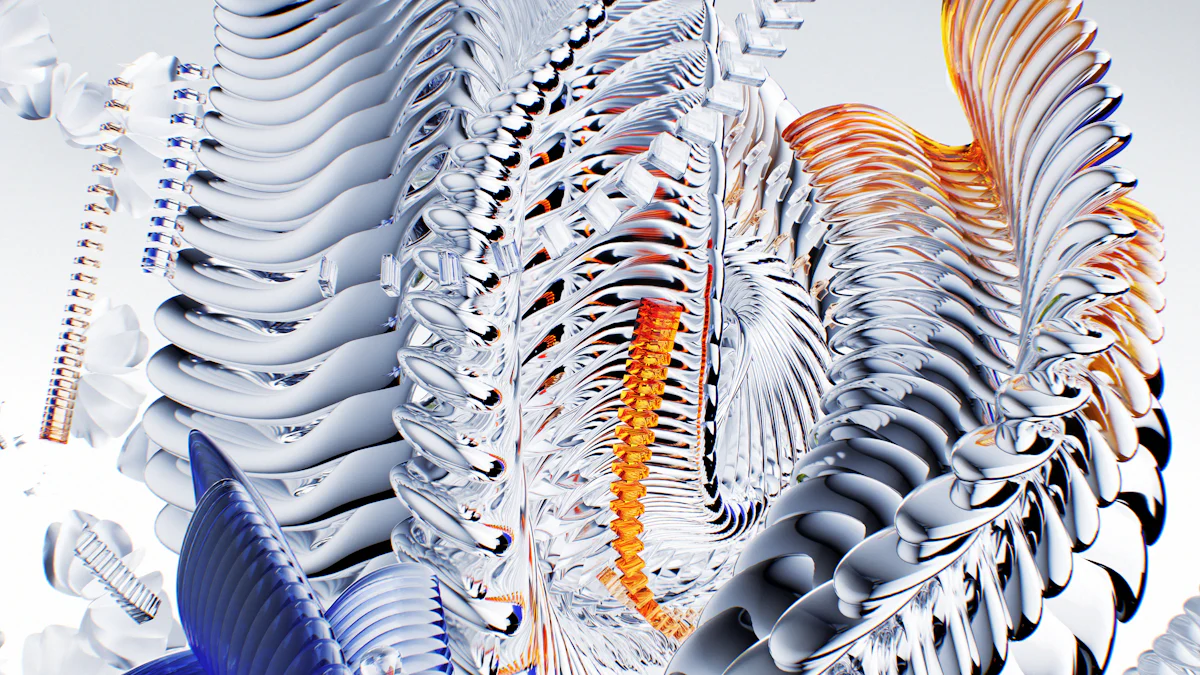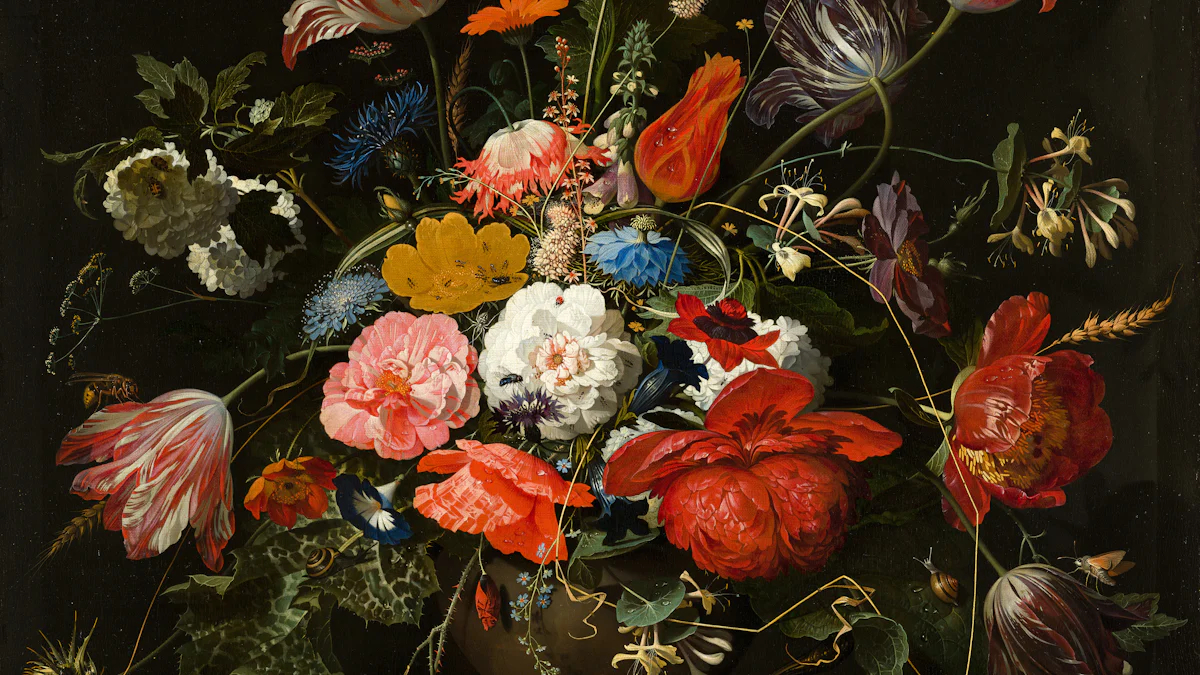Can Generative AI Replace Human Artists?

Generative AI is transforming the creative industry with its remarkable capabilities. You might wonder how this technology can create art, music, and even literature. The market for Generative AI in creative fields is booming, projected to reach $21.6 billion by 2032. This growth reflects the increasing demand for intelligent solutions. As you explore this fascinating world, consider the central question: Can AI truly replace human artists? While AI can produce impressive works, the unique touch of human creativity remains a vital part of artistic expression.
Understanding Generative AI
What is Generative AI?
Generative AI refers to a class of artificial intelligence that can create new content. It mimics human creativity by generating art, music, and literature. This technology uses algorithms to produce outputs that resemble human-made creations. You might have seen AI-generated paintings or heard AI-composed music. These are examples of how Generative AI is making its mark in the art world.
Definition and Key Characteristics
Generative AI involves algorithms that learn patterns from existing data. These algorithms then use this knowledge to create new content. The key characteristic of Generative AI is its ability to generate something novel. Unlike traditional AI, which follows set rules, Generative AI can surprise you with unexpected results. It operates on the principle of learning from vast datasets to produce unique outputs.
Examples of Generative AI in Art
Generative AI has been used to create stunning visual art. Artists employ tools like Generative Adversarial Networks (GANs) to produce captivating imagery. These images often push the boundaries of human imagination. You might find AI-generated art in galleries or online platforms. It challenges traditional notions of creativity and opens new avenues for artistic expression.
How Generative AI Works
Understanding how Generative AI works can enhance your appreciation of its capabilities. It relies on complex algorithms and extensive datasets to function effectively. The process involves machine learning techniques that enable AI to learn and create.
Algorithms and Data Sets
Generative AI uses algorithms to analyze and learn from data. These algorithms sift through massive datasets to identify patterns and structures. For instance, an AI might study thousands of paintings to understand different styles. Once it learns these patterns, it can generate new artworks that reflect similar styles. The quality of AI-generated art depends on the richness of the data it learns from.
Machine Learning and Creativity
Machine learning plays a crucial role in Generative AI's creative process. It allows AI to adapt and improve over time. As you interact with AI tools, they learn from your preferences and feedback. This interaction enhances the AI's ability to create art that resonates with human emotions. While AI lacks the emotional depth of human artists, it can still produce impressive works. Generative AI serves as a tool that complements human creativity, offering new possibilities for artistic exploration.
The Impact of AI on Human Artists

Generative AI is reshaping the art world, presenting both challenges and opportunities for human artists. As you navigate this evolving landscape, understanding these dynamics can help you appreciate the role of AI in art.
Challenges Faced by Artists
Competition with AI-generated art
Generative AI has introduced a new form of competition for artists. You might notice AI-generated art gaining popularity in galleries and online platforms. This shift raises questions about the value of traditional art. While AI can produce art quickly and in large quantities, it often lacks the emotional depth and personal narrative that human artists bring to their work. Elijah Clark, an art expert, suggests that AI may liberate artists to focus more on meaningful messaging and growth, rather than replacing their creative roles.
Ethical considerations and originality
As an artist or enthusiast, you may wonder about the ethical implications of AI-generated art. Who should receive credit for a piece created with AI assistance? How can you ensure that AI respects copyright laws and moral rights? James Gondola, an art expert, emphasizes the importance of promoting responsible and inclusive use of AI technologies. Artists must navigate these ethical waters while maintaining the originality that defines human creativity.
Opportunities for Collaboration
AI as a tool for inspiration
Generative AI offers exciting opportunities for collaboration. You can use AI as a tool to explore new creative possibilities. By analyzing vast datasets, AI can provide fresh perspectives and ideas that might not have occurred to you otherwise. Art Sharma, an art expert, notes that AI has the potential to democratize art by lowering costs and creating new markets. Embracing AI as a collaborator can spur innovation and broaden your artistic horizons.
Enhancing creativity through technology
Technology can enhance your creativity by handling data-intensive tasks and generating new possibilities. While AI can mimic emotional cues, it often lacks the spontaneity and genuineness of human-created works. However, by leveraging the strengths of both human and machine, you can enhance creative outcomes. Artnet News highlights a cautious optimism about using AI as a tool for artists. By integrating AI into your creative process, you can expand your artistic expression and explore new frontiers.
Economic Implications of AI in Art

Generative AI is reshaping the art market, influencing how art is valued and consumed. As you delve into this topic, consider how these changes impact both artists and collectors.
Market Changes
Valuation of AI-generated art
The valuation of AI-generated art presents a new challenge. Traditional art often carries emotional depth and unique styles that reflect the artist's personal journey. In contrast, AI art lacks these human elements, which can make it difficult to assess its worth. Despite this, AI-generated images have found success in traditional art markets. You might see AI art fetching high prices at auctions, raising questions about its long-term value compared to human-made art.
Shifts in art consumption and demand
Generative AI has also shifted art consumption patterns. You may notice an increase in the availability of art due to AI's ability to produce large quantities quickly. This abundance can lead to changes in demand, as collectors and enthusiasts explore new forms of digital art. However, the cultural, historical, and emotional significance of traditional art remains irreplaceable. As a result, the art market now balances between appreciating AI-generated works and valuing the timeless appeal of human-created art.
Job Prospects for Artists
New roles and skills in the AI era
The rise of Generative AI introduces new roles and skills for artists. You might find opportunities in collaborating with AI to create innovative artworks. Artists can now act as curators, guiding AI tools to produce desired outcomes. This collaboration requires a blend of artistic vision and technical proficiency. As you adapt to these changes, developing skills in AI technology can enhance your creative process and open new career paths.
The future of traditional art careers
While Generative AI offers exciting possibilities, the future of traditional art careers remains uncertain. Some artists fear that AI-generated content could overshadow their work. However, the unique qualities of human art—its emotional depth and cultural resonance—ensure its continued relevance. You can embrace AI as a complementary tool, using it to enhance your creativity rather than replace it. By doing so, you preserve the essence of traditional art while exploring new frontiers.
Balancing Threats and Opportunities
The Role of Human Creativity
Unique human qualities in art
Human creativity possesses unique qualities that AI cannot replicate. You bring personal experiences, emotions, and cultural backgrounds to your art. These elements infuse your work with depth and meaning. AI, on the other hand, relies on algorithms and data. It lacks the ability to feel or interpret emotions. Your art reflects your individuality and perspective, making it irreplaceable.
"Art is not what you see, but what you make others see." - Edgar Degas
This quote highlights the power of human creativity. You have the ability to evoke emotions and provoke thought through your art. AI-generated art may mimic styles, but it cannot capture the essence of human expression.
Emotional and cultural significance
Art holds emotional and cultural significance that transcends time. You create art that resonates with people on a personal level. It can reflect societal values, historical events, and cultural identities. AI-generated art lacks this connection. It cannot understand or convey the complexities of human emotions and cultural narratives.
Consider the role of art in preserving cultural heritage. You contribute to the continuation of traditions and stories through your creations. AI may assist in reproducing art, but it cannot replace the cultural significance embedded in human-made works.
Future Outlook
Predictions for AI and art integration
The future of AI and art integration presents exciting possibilities. You might see AI as a tool that enhances your creative process. It can assist in generating ideas, exploring new styles, and expanding your artistic horizons. However, AI will not replace the unique qualities that you bring to your art.
Experts predict that AI will continue to evolve, offering new opportunities for collaboration. You can leverage AI to push the boundaries of creativity and explore uncharted territories. This integration will likely lead to innovative art forms and experiences.
Strategies for artists to adapt
As an artist, adapting to the rise of AI involves embracing its potential while preserving your unique voice. Here are some strategies to consider:
Embrace AI as a collaborator: Use AI tools to enhance your creative process. Experiment with new techniques and styles that AI can offer.
Focus on your strengths: Highlight the emotional depth and cultural significance of your art. Emphasize the qualities that make your work uniquely human.
Stay informed: Keep up with advancements in AI technology. Understanding its capabilities and limitations will help you navigate the evolving art landscape.
Develop new skills: Consider learning about AI and its applications in art. This knowledge can open new career paths and opportunities for collaboration.
By adopting these strategies, you can thrive in the changing art world. AI offers new possibilities, but your creativity remains at the heart of artistic expression.
You hold the key to creativity that AI cannot replicate. Your art carries emotions, context, and personal experiences that machines lack. While AI can handle data-intensive tasks and generate new possibilities, it serves as a tool to complement your creativity.
AI offers new opportunities: It can expand your artistic expression and career paths.
Collaboration potential: The future of creativity lies in leveraging both human and AI strengths.
"The future of art is not about replacement but enhancement."
Embrace AI as a partner, not a competitor, in your creative journey.
See Also
The Essence of Generative AI: Unleashing Creativity
The Future of Creativity: Embracing Generative AI Innovation
Decoding AI's Role in Artistic Creation
Exploring the Contrasts Between Generative and Traditional AI
